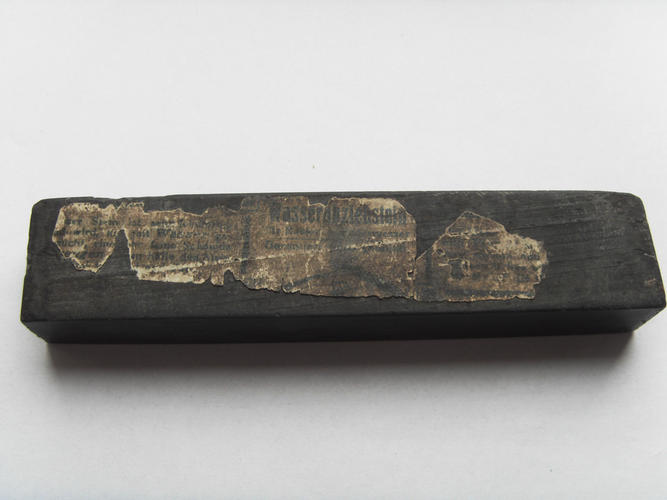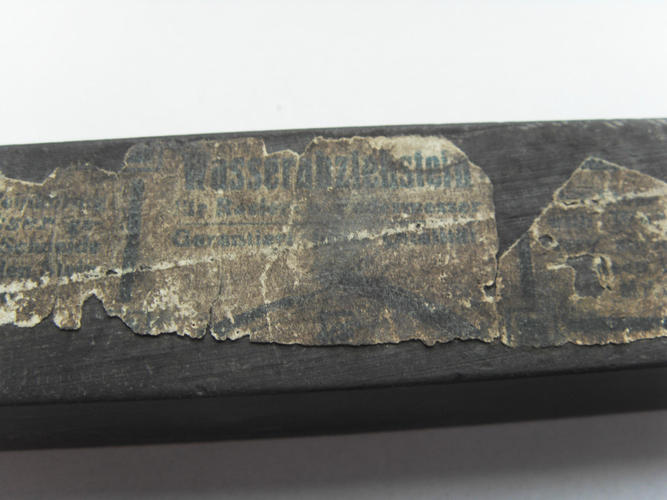Results 1 to 10 of 15
Threaded View
-
02-11-2016, 04:41 PM #1Member

- Join Date
- Feb 2016
- Location
- Denmark
- Posts
- 73
Thanked: 8 Anyone recognize this (thuri? escher?) label?
Anyone recognize this (thuri? escher?) label?
Hello, recently bought this on the bay I'm pretty sure it is a thuri of some sort. Does anyone recognize the label or have a stone with a complete version?


Text I can identify:
The middle section says "Wasserabziehstein für Rasier und Federmesser; Garantiert feinste (?) Qualität"
Left section, german: Dieser Stein ist sehr feinkörnig und wird nur mit Wasser gebraucht, eine sehr feine Schneide erzeugen. Man halte den Stein von (...)
Right section; same in english and Made in Germany (I suppose) at the bottom ...
Any help greatly appreciated.
Thanks in advance,


 16Likes
16Likes LinkBack URL
LinkBack URL About LinkBacks
About LinkBacks






 Reply With Quote
Reply With Quote